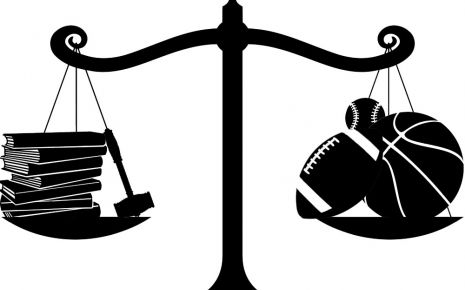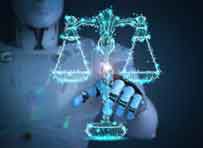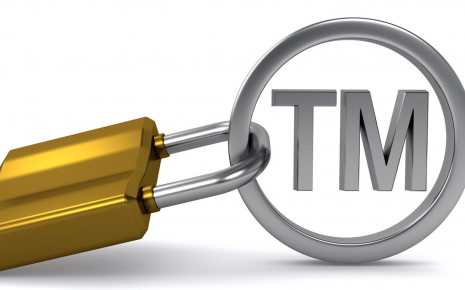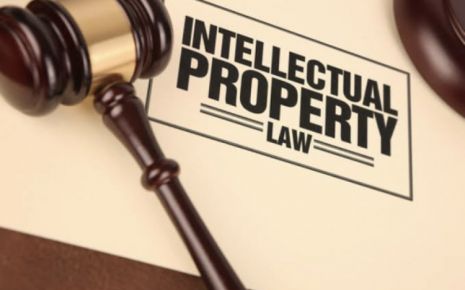IPR in Film Industry
This paper deals with the in-depth idea of intellectual property rights (IPR),
how the laws in India govern around these rights, types of intellectual rights
which include copyright, patent, trademark etc. The approach of this paper is
restricted to India and its governing laws related to IPR. It also mentions
about the history of these rights, evolution and their necessity in today's
modern world.
The role of IPR is expanding day by day in our lives in diverse fields as in literary arts, dance, music, sports, fashion, entertainment industries etc. IPR provides the original owners of their work certain protection backed by law where they can protect illegal use of their work or profit earned by someone else through their work.
The research focus of this paper revolves around IPR and entertainment industries, how movies, advertisements, artistic works, sound films and various other creations could be prevented from being imitated or borrowed by others, what are the various legal provisions that are available for the protection of certain rights related to IPR. The paper ends with a short conclusion summarizing the idea and intention behind this subject-matter chosen for this paper.
Introduction:
According to World Intellectual Property Organization (WIPO)- "Intellectual Property – refers to creations of the mind, such as inventions, literary and artistic works, designs and symbols, names and images".[1] Intellectual rights also referred to as the creation of human minds or the work that has been produced through the intellectual knowledge of the people which may include any literary piece of art, poetry, symbols, design, music, script, advertisement and various other creations.
These are termed as tangible properties of the people. World Trade Organization (WTO) defines IP rights as follows- "Intellectual property rights are the rights given to persons over the creations of their minds. They usually give the creator an exclusive right over the use of his/her creation for a certain period of time".[2]
These rights are being protected and the ownership lies with the original inventor of that creation and no other person than the owner of that creation or invention can benefit from the profits of their work unless permitted by the owner.
The act clearly mentions that no other person without the permission of the owner who has a license of the copyright could publish or perform any literary piece of art, innovation, design or any other creation. The other major legislation that was enacted in 1970 was the "Patents Act of 1970"[4] which granted to right to obtain patent by adhering to the guidelines mentioned in the above act.
The act under section 3 also mentions the list of inventions or creations that cannot be granted with a patent. There are various other laws related to the intellectual rights of the people but the major idea behind all the IP laws is to promote the intellectual creations of the people and to provide them with a platform where they can develop and yield benefits from their own innovations or ideas.
There are various fields where IP laws are playing great role in protecting and preserving the ideas of the people whether its fashion designing, industrial development, advertisements, sports industry and many more. In recent years, IP in film industry has been growing immensely, protecting and granting legal rights to the producers, filmmakers, composers from script to screen. It preserves the creations of the film-makers and safeguard their rights by not letting anyone else take the credits or the monetary benefits from the owners original work.
Here comes IP Laws which protect the content or any other related creation of a movie from being used by other creators or makers. IP Laws provide a great platform for the cinema industries to make their innovations restricted and not being copied by any other sources. These rights protect every basic aspect which is essential during the making of a film whether its about the script, dialogues, songs etc.
Copyright and trademarks are majorly used IP rights in entertainment industries but there are exceptions where copyright cannot be granted. For example, in the naming of the film as we can see many movies having the similar names like Dostana ( 1980 & 2010), Hera Pheri (1976 & 2000) and many more.
These titles are not considered under the copyright act as they have the minimum authorship for their creation as copyright is only granted when you have put in lot of efforts for your creation or innovation. Another IP right that is most protected in film industries is the screenplay which is the most easiest way for intimating and using without the license granted by the original owner.
Through copyright, film-makers can avail the exclusive rights and the authority over their work. Music and lyrics are another very basic and important element during the making of the movie. The very famous case of Javed Akhtar vs Producer's Guild Caseallowed the lyricists and the musicians to claim copyright for their work rather than granting their copyright to the film-makers.
Another landmark judgement was of "R.G Anand vs M/S. Delux Films & Ors". In this case, the plaintiff accused the defendant of copyright infringement for his innovation of the play "Hum Hindustani in 1973".
He claimed that the movie " New Delhi" is complete copy of his play. This was a landmark judgement of Supreme Court where supreme laid down the guidelines of the copyright act in which it clearly mentioned that a person can claim copyright infringement only for their expressed creations and not just for their ideas which are not performed or published.
Another famous case was "Sanjay Kumar Gupta v. Sony Picture Networks India Pvt. Ltd.- In this case, the appellant claimed copyright infringement against Sony Network for their popular game show KBC as the appellant had a similar show called 'Jeeto Unlimited' where people received gifts by answering the questions through a quiz but the verdict came in the favour of the respondent as the court mentioned that engaging the audience is constant phenomenon and answering questions on screen is completely different from the appellants claim.
For employing songs written by other lyricists or musicians in their films, filmmakers must pay royalties. The music composer and the director, respectively, must pay royalties to the original creator in the case of a "remixed song" or a "movie remake"; otherwise there is of them being held liable for copyright infringement.
For instance, Bollywood movie Bala's producers were charged with copyright infringement in October 2019 by soundtrack composer Dr Zeus. The British musician accused Bala's creators of stealing his work and alleged that his popular song Don't Be Shy was replicated in the movie without his consent. Later, the Bala film's creators claimed in an official announcement that they had successfully acquired the copyrights from "Karman Entertainment".
Conclusion:
Creative brains have traditionally been greatly protected by intellectual property regulations, particularly copyright and trademark laws. The primary purpose of copyright legislation is to safeguard authors' creative creations against exploitation or unauthorised usage for profit.
On the other hand, any signs, products, or services are protected by trademark law. In the media and entertainment industry, intellectual property is of utmost importance since it provides the required protection, prohibiting the misuse of their work and accelerating corporate growth. Intellectual property is more important in the digitised age.
Copyright piracy problems are on the rise as more and more content is shared online. After it has been developed, an author's or artist's creation needs to be protected to prevent misuse by others. At this point, intellectual property law enters the picture, fulfilling the function it has always served to the best of its ability. It has occasionally been updated to address problems that arise with respect to creator rights in the modern period.
End-Notes:
The role of IPR is expanding day by day in our lives in diverse fields as in literary arts, dance, music, sports, fashion, entertainment industries etc. IPR provides the original owners of their work certain protection backed by law where they can protect illegal use of their work or profit earned by someone else through their work.
The research focus of this paper revolves around IPR and entertainment industries, how movies, advertisements, artistic works, sound films and various other creations could be prevented from being imitated or borrowed by others, what are the various legal provisions that are available for the protection of certain rights related to IPR. The paper ends with a short conclusion summarizing the idea and intention behind this subject-matter chosen for this paper.
Introduction:
According to World Intellectual Property Organization (WIPO)- "Intellectual Property – refers to creations of the mind, such as inventions, literary and artistic works, designs and symbols, names and images".[1] Intellectual rights also referred to as the creation of human minds or the work that has been produced through the intellectual knowledge of the people which may include any literary piece of art, poetry, symbols, design, music, script, advertisement and various other creations.
These are termed as tangible properties of the people. World Trade Organization (WTO) defines IP rights as follows- "Intellectual property rights are the rights given to persons over the creations of their minds. They usually give the creator an exclusive right over the use of his/her creation for a certain period of time".[2]
These rights are being protected and the ownership lies with the original inventor of that creation and no other person than the owner of that creation or invention can benefit from the profits of their work unless permitted by the owner.
There are various types of IP rights which majorly include:
Patents
It provides an exclusive and the legal right to the owner t to disallow other people from selling or unauthorized use of the work created by the primary or the first originator of that work. Patents protect the innovations and ideas of the primary or the very first owner of the work or their creation for a specific period of time. The owner could benefit from his innovation by handling his work or granting the license of his/her innovation to other person.
Copyright
It is one of the intellectual right given to the people where they have the authority to publish, perform or print their own artistic, literary or any other sought of innovations created by them and earn profits through their work, these rights protect only the expressed form of ideas.
Trademarks
It gives recognition to a certain symbol, design, logo or any other form of visible expression which distinguishes that particular design or symbol from other designs or logos. Trademark can be granted to an individual, company, business organization, non-government organizations or any other legal entity.
Industrial Designs
Geographical Indications
Trade Secrets
History and evolution of IP laws:
After independence, the government of India felt necessary to initiate laws that protect and govern the new technologies and innovations produced by the people of India and to license the work and put restrictions on the unauthorized use of the innovations without the use of its original owner. The very first legislation that arrived was "The Copyright Act of 1957"[3] which has already been amended six times till now.The act clearly mentions that no other person without the permission of the owner who has a license of the copyright could publish or perform any literary piece of art, innovation, design or any other creation. The other major legislation that was enacted in 1970 was the "Patents Act of 1970"[4] which granted to right to obtain patent by adhering to the guidelines mentioned in the above act.
The act under section 3 also mentions the list of inventions or creations that cannot be granted with a patent. There are various other laws related to the intellectual rights of the people but the major idea behind all the IP laws is to promote the intellectual creations of the people and to provide them with a platform where they can develop and yield benefits from their own innovations or ideas.
There are various fields where IP laws are playing great role in protecting and preserving the ideas of the people whether its fashion designing, industrial development, advertisements, sports industry and many more. In recent years, IP in film industry has been growing immensely, protecting and granting legal rights to the producers, filmmakers, composers from script to screen. It preserves the creations of the film-makers and safeguard their rights by not letting anyone else take the credits or the monetary benefits from the owners original work.
Findings:
Role of IPR in film industries:
India has one of the largest film and entertainment industry , people in India are film enthusiasts and love watching films. As it is said cinema is representation of the society we live in and also it never fails to spice it up with some fantasies which provide a perfect escape for people. What is so unique about the Indian industry is how smoothly the music is incorporated in our films which also quite helps in marketing of the film and we get to enjoy new bangers frequently but what scares the producers or the film-makers is the borrowing or intimation of their content or their songs, script etc.Here comes IP Laws which protect the content or any other related creation of a movie from being used by other creators or makers. IP Laws provide a great platform for the cinema industries to make their innovations restricted and not being copied by any other sources. These rights protect every basic aspect which is essential during the making of a film whether its about the script, dialogues, songs etc.
Copyright and trademarks are majorly used IP rights in entertainment industries but there are exceptions where copyright cannot be granted. For example, in the naming of the film as we can see many movies having the similar names like Dostana ( 1980 & 2010), Hera Pheri (1976 & 2000) and many more.
These titles are not considered under the copyright act as they have the minimum authorship for their creation as copyright is only granted when you have put in lot of efforts for your creation or innovation. Another IP right that is most protected in film industries is the screenplay which is the most easiest way for intimating and using without the license granted by the original owner.
Through copyright, film-makers can avail the exclusive rights and the authority over their work. Music and lyrics are another very basic and important element during the making of the movie. The very famous case of Javed Akhtar vs Producer's Guild Caseallowed the lyricists and the musicians to claim copyright for their work rather than granting their copyright to the film-makers.
Another landmark judgement was of "R.G Anand vs M/S. Delux Films & Ors". In this case, the plaintiff accused the defendant of copyright infringement for his innovation of the play "Hum Hindustani in 1973".
He claimed that the movie " New Delhi" is complete copy of his play. This was a landmark judgement of Supreme Court where supreme laid down the guidelines of the copyright act in which it clearly mentioned that a person can claim copyright infringement only for their expressed creations and not just for their ideas which are not performed or published.
Another famous case was "Sanjay Kumar Gupta v. Sony Picture Networks India Pvt. Ltd.- In this case, the appellant claimed copyright infringement against Sony Network for their popular game show KBC as the appellant had a similar show called 'Jeeto Unlimited' where people received gifts by answering the questions through a quiz but the verdict came in the favour of the respondent as the court mentioned that engaging the audience is constant phenomenon and answering questions on screen is completely different from the appellants claim.
For employing songs written by other lyricists or musicians in their films, filmmakers must pay royalties. The music composer and the director, respectively, must pay royalties to the original creator in the case of a "remixed song" or a "movie remake"; otherwise there is of them being held liable for copyright infringement.
For instance, Bollywood movie Bala's producers were charged with copyright infringement in October 2019 by soundtrack composer Dr Zeus. The British musician accused Bala's creators of stealing his work and alleged that his popular song Don't Be Shy was replicated in the movie without his consent. Later, the Bala film's creators claimed in an official announcement that they had successfully acquired the copyrights from "Karman Entertainment".
Conclusion:
Creative brains have traditionally been greatly protected by intellectual property regulations, particularly copyright and trademark laws. The primary purpose of copyright legislation is to safeguard authors' creative creations against exploitation or unauthorised usage for profit.
On the other hand, any signs, products, or services are protected by trademark law. In the media and entertainment industry, intellectual property is of utmost importance since it provides the required protection, prohibiting the misuse of their work and accelerating corporate growth. Intellectual property is more important in the digitised age.
Copyright piracy problems are on the rise as more and more content is shared online. After it has been developed, an author's or artist's creation needs to be protected to prevent misuse by others. At this point, intellectual property law enters the picture, fulfilling the function it has always served to the best of its ability. It has occasionally been updated to address problems that arise with respect to creator rights in the modern period.
End-Notes:
- https://www.wipo.int/about-ip/en/
- https://www.wto.org/english/tratop_e/trips_e/intel1_e.htm
- https://copyright.gov.in/documents/copyrightrules1957.pdf
- https://www.indiacode.nic.in/handle/123456789/1392?sam_handle=123456789/1362
Law Article in India
Legal Question & Answers
Lawyers in India - Search By City
LawArticles
How To File For Mutual Divorce In Delhi

How To File For Mutual Divorce In Delhi Mutual Consent Divorce is the Simplest Way to Obtain a D...
Increased Age For Girls Marriage

It is hoped that the Prohibition of Child Marriage (Amendment) Bill, 2021, which intends to inc...
Facade of Social Media

One may very easily get absorbed in the lives of others as one scrolls through a Facebook news ...
Section 482 CrPc - Quashing Of FIR: Guid...

The Inherent power under Section 482 in The Code Of Criminal Procedure, 1973 (37th Chapter of t...
The Uniform Civil Code (UCC) in India: A...

The Uniform Civil Code (UCC) is a concept that proposes the unification of personal laws across...
Role Of Artificial Intelligence In Legal...

Artificial intelligence (AI) is revolutionizing various sectors of the economy, and the legal i...








Please Drop Your Comments